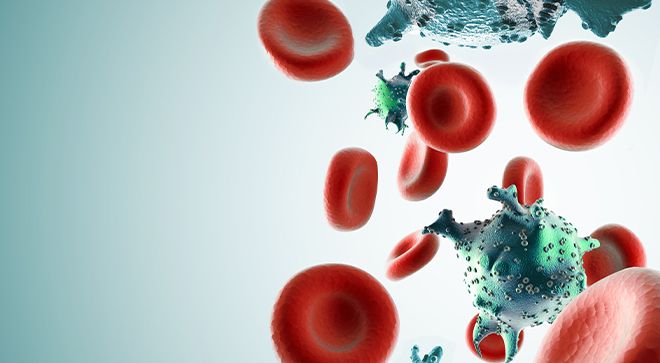Article
Understanding Mastectomy and Reconstruction Options Can Ease Difficult Decisions
Author(s):
Those considering mastectomy to help prevent inherited breast cancer, or because they’ve been diagnosed with the disease, are likely to find themselves sorting through a host of complex questions.
Those considering mastectomy to help prevent inherited breast cancer, or because they’ve been diagnosed with the disease, are likely to find themselves sorting through a host of complex questions.
What is the surgery capable of accomplishing? What kinds of mastectomies and reconstruction options are available and appropriate? What types of medical surveillance should follow these procedures, and how often?
Olga Ivanov, M.D., a breast surgeon and medical director of the Comprehensive Breast Health Center at Celebration Health in Celebration, Florida, shed light on those topics June 9 in a presentation at the 10th Annual conference held by Facing Our Risk of Cancer Empowered (FORCE). Medical writer Patricia Anstett, author of “Breast Cancer Surgery and Reconstruction: What’s Right for You,” also spoke during the session.
FORCE’s mission is to improve the lives of individuals and families affected by hereditary breast, ovarian and related cancers.
Understanding Mastectomy
Prophylactic mastectomies are preventive procedures that eliminate most of a woman’s breast cancer risk, Ivanov told the audience, whereas therapeutic mastectomies remove an existing cancer. To help facilitate discussions between patients and their doctors, she offered additional definitions of mastectomy terms:
- In someone diagnosed with breast cancer, a contralateral mastectomy is one that is performed in the cancer-free breast, as a preventive measure.
- A bilateral mastectomy removes both breasts.
- Radical mastectomies, which remove all breast tissue, the muscle behind it and axillary and sentinel mammary lymph nodes, aren’t done anymore, because they are very disfiguring and lead to long-term lymphedema. Physicians instead administer chemotherapy to patients who have larger cancers, shrinking the tumors so that less invasive surgery is possible.
- Modified radical mastectomies remove breast tissue and lymph nodes all in one piece; they are still performed but are rare because shrinking tumors with chemotherapy before surgery is considered preferable.
- Total and simple mastectomies are two terms for a single common procedure, which removes just the breast tissue and, in order to stage the cancer, a few lymph nodes.
- Skin-sparing surgery removes breast tissue but leaves an envelope of skin intact, in preparation for breast reconstruction.
- Nipple-sparing surgery removes breast tissue but leaves both skin and nipples intact, offering the best cosmetic outcome.
- All types of mastectomy offer the same level of protection against cancer recurrence, Ivanov said
Issues in Breast Reconstruction
Among all women who undergo mastectomies in the United States, just 16 percent have breast reconstruction, Ivanov said, but that percentage rises to between 45 and 60 percent at dedicated cancer centers.
Breast implants are used in more than 90 percent of reconstructions because the procedure is simple, has a low complication rate and offers ease of recovery for patients.
It’s possible to have mastectomy and reconstruction with implants in a single procedure, but more often mastectomy is done first, with reconstruction following a few months later, Ivanov said.
“When you put an implant in, it’s impossible to gauge the final size and swelling effect,” she said. “Most who have this all done in one procedure need a second surgery for tweaking.”
Another option for rebuilding breasts is to use muscle and fat from another part of the patient’s body, such as the back, buttocks or tummy, but compared with implant placement, this can be a more intensive surgery that requires a longer recovery time.
Small bits of fat have traditionally been used to supplement implants, filling divots. Recently, however, there has been a surge in the technique of transferring large chunks of fat, grafted from somewhere on the patient’s body, as the sole substitute for breast tissue. In the past, fat used this way often liquefied or calcified, but in the past 10 years, select doctors have perfected the technique to generate “fantastic,” natural-looking results, Ivanov said. “It’s a wonderful technique, when done right,” she said.
When undergoing reconstruction, patients may wonder whether the procedure affects their risk of cancer recurrence. To avoid such risk, researchers have determined that the flaps of skin left intact in skin-sparing mastectomies must be thin enough to be free of residual breast tissue. Residual tissue can be found in 46 percent of mastectomies that leave 5 millimeter—thick flaps, and in 80 percent of mastectomies that leave flaps thicker than 5 millimeters, Ivanov said.
The concern in making flaps too thin, on the other hand, is cutting off the blood supply the skin needs to live.
“You want the perfect balance,” she said, “to leave healthy skin but not leave behind breast tissue.”
Of course, women can choose not to leave flaps behind, opting against reconstruction. If they change their minds later, Ivanov said, a type of reconstruction can still be done.
To check for cancer recurrence or for a new cancer, screening after mastectomy is recommended. In people who have undergone mastectomy, any recurrences can typically be felt right under the skin. As a result, surveillance should take the form of a clinical exam once a year by the breast surgeon, Ivanov said, with MRI imaging to check anything suspicious.
Finding the Right Care
Women who are considering mastectomy should choose cancer centers that are committed to treating breast cancer, are conducting research on managing patients with BRCA mutations, and have staff members such as nurse navigators who are dedicated to taking care of patients, Ivanov suggested.
“It’s a whole-team approach,” she said. “You should never feel alone going through treatment for breast cancer.”
To find the most qualified teams in any U.S. region, Ivanov suggested visiting the American College of Surgeons website, whose listed institutions have passed stringent accreditation requirements.
She noted that care should include psychological management of patients undergoing mastectomy who should be counseled to have realistic expectations about the outcomes of this irreversible surgery.
Anstett recommended her website BCSurgeryStories.com and its Facebook page as sources of insights for patients, and also suggested a website for help with sexual health after mastectomy — Sexyaftercancer.com — as well as a Facebook group known as Flat and Fabulous, which supports those who opt against reconstruction.
Following surgery, Ivanov likes to check in with her patients by polling them, via questionnaire, about how they’re feeling and what they’re struggling with. Then, she follows up with conversations.
“As doctors, we are getting better at asking ‘How are you doing?’ and ‘How is your marriage after the surgery?’” Ivanov said. “We’re taking care of the whole woman.”





